Cinderella Is Dead
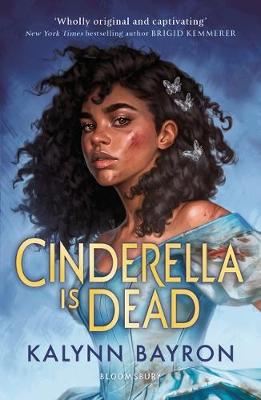
By Author / Illustrator
Kalynn Bayron
Genre
Fairy Tales & Folk Tales
Age range(s)
11+
Publisher
Bloomsbury YA
ISBN
9781526621979
Format
Paperback / softback
Published
06-08-2020
Synopsis
It's 200 years since Cinderella found her prince, but the fairytale is over. Sophia knows the story though, off by heart. Because every girl has to recite it daily, from when she's tiny until the night she's sent to the royal ball for choosing. And every girl knows that she has only one chance. For the lives of those not chosen by a man at the ball ... are forfeit.
But Sophia doesn't want to be chosen - she's in love with her best friend, Erin, and hates the idea of being traded like cattle. And when Sophia's night at the ball goes horribly wrong, she must run for her life. Alone and terrified, she finds herself hiding in Cinderella's tomb. And there she meets someone who will show her that she has the power to remake her world ...
An electrifying twist on the classic fairytale that will inspire girls to break out of limiting stereotypes and follow their dreams!
Find out more in ReadingZone's Q&A with author Kalynn Bayron
Reviews
Beverley
Cinderella is Dead is an unusual book - a horror story based upon a well-loved fairy tale. In the fictional town of Lille, it is 200 years since Cinderella met Prince Charming and (apparently) lived 'happily ever after'. But for the girls and women living in Lille today, life is far from idyllic. The men of the town are in charge; the women little more than chattels. Not even allowed to keep their own money, the women depend on their menfolk for everything.
Every year, teenage girls are forced by King Manford, a descendant of Prince Charming, to appear at the Annual Ball. Here, the men of the kingdom will select their wives, based upon the girls' display of finery. At the start of the story, Sophia Grimmins is being prepared to attend the ball. Sophia is a feisty heroine, totally against the idea of being 'chosen' by a man. She is in love with her friend, Erin, and wants to spend her life with her.
Once at the ball, Sophia rebels and flees, managing to escape the king's guards. She hides out in Cinderella's mausoleum, where she meets Constance, a descendant of Cinderella and her stepsisters. The two girls are attracted to one another, and together they vow to bring down King Manford once and for all, and free the women of Lille from his evil and cruel rules. In doing so the girls learn that the story of Cinderella and her stepsisters is very different from the one they have been told all of their lives.
The story is fast-paced and exciting. The characters of Sophia and Constance are well described, both girls are brave and principled and, although they both see the dangers they face in carrying out their quest, they are prepared to do whatever it takes to destroy King Manford. The relationship between Sophia and Constance is tastefully described, but we are left in no doubt as to the depth of feeling between the two girls.
I enjoyed this book very much - it certainly puts a totally different spin onto the story of Cinderella! The book has a strong feminist theme, which will appeal to many. If I had one criticism, it would be that the story was a little one-sided; all of the main female characters are strong and brave, whereas nearly all of the men are bullies or misogynists. However, it certainly raises many issues for discussion and I am sure that it will be popular with teenagers.
400 pages / Reviewed by Beverley Somerset, school librarian
Suggested Reading Age 14+
Tanja
From the distinctive front cover, celebrating Sophia Grimmins as proud, beautiful, defiant, fierce and brown skinned, to her explosive story inside, Kalynn Bayron reclaims the iconic fairy tale from the Brothers Grimm with her new YA fantasy, Cinderella Is Dead. Groundbreaking, exciting and daring, it reinvents and challenges the beliefs perpetuated by the illusion that every young girl is searching for her Prince Charming who will give her a happily ever after.
In Cinderella is Dead, Bayron offers readers a book that crosses boundaries - an innovative YA where the marginalised in society become the heroes - intersecting race and sexuality within a black character. She supports Rudine Sims Bishop's conviction that, 'Children need both mirror and window books - books where they can see themselves in the pages, books that open up a new world to them'.
Not seeing herself reflected in fairy tales as a kid, and her desire for queer black girls to be visible in fantasy YA, led Bayron in her quest to find a responsive publisher who recognised the importance of the story she had to tell. She is passionate about readers being able to see themselves in the text, recalling her own reading experiences that gave her the zest to write, "most of the stories I'd been exposed to only had black or brown people, like me, as side characters. It wasn't until I decided to write the books I wanted to see, the ones that showed black girls in leading roles, that my writing came alive, imbued with all the richness of my own culture and experiences, I felt like I'd found what I was meant to do."
By giving the reader Sophia Grimmins, a sassy protagonist who is prepared to challenge the patriarchy despite her fears, and to stand up for what she believes in, Bayron's wish is granted. She breaks the illusion of the defenceless female succumbing to a man's charms. Sophia not only prefers women but senses that the palace-approved fairy tale of Cinderella and her fairy godmother, who grants her everything she wants, is a myth and sets out to prove it.
Cinderella's story - the so-called sacred text which the girls of Lille are compelled to live by - is an indication of how different versions of a story can alter over time and how what is a lie can be considered true. Furthermore, Sophia is prepared to fight for freedom and strive to release the people of Lille from their grinding existence, whatever the cost to herself. She puts her heart on the line to discover the dark secret at the heart of the kingdom. Searching for answers in the dangerous White Forest, she flees the glitzy false sham of a ball where men have attempted to claim her against her will.
Sophia Grimmins takes over the mantle of The Storyteller from the Brothers Grimm and transforms the tale of Cinderella's vilified stepsisters, cruel stepmother and the beneficent magical tree, delivering a blow to the objectification of women by selfish and unworthy men. Her friend Luke is a footnote instead of a major player and has his own reasons for rebelling and attempting to assume the role of protector. Courageous Constance is a fiery foil to Sophia. Deft in sword play, she allures Sophia with her confidence, pride in her identity and belief in herself. This in contrast to Sophia's experiences with her dearest girlfriend, Erin, but her heart remains torn.
After reading this, you will never look at Cinderella in the same way again. The beautiful reflection is smashed. The fairy tale castle is a mirage. The fabled glass slipper is an instrument of torture and a terrible truth lies below the façade. Also inspired by the TV series Once Upon A Time, which specialised in re-imagining fairy tale characters, Cinderella Is Dead goes one step further. Feminist and liberating, it not only reclaims the story of Cinderella for females everywhere, inverting fairy tale tropes and busting stereotypes, but significantly it also vanquishes the false male constructs of finery portraying them as trappings of oppression.
King Manford, the malignant ruler of Lille, has an iron clad fist and is a misogynistic, lying hypocrite with an evil soul. He preys upon young girls who become forfeits to his whims if they are not chosen by others after being paraded at three grand balls. Their parents are in thrall to his demands. Amina, a complex character whom Sophia does not know whether to trust or not, warns her, "I think we sometimes make the mistake of thinking monsters are abhorrent aberrations, lurking in the darkest recesses, when the truth is far more disturbing. The most monstrous of men are those who sit in plain sight, daring you to challenge them". King Manford is calculating and manipulative and believe me when I say he will not stop until he finds you.
Indeed Cinderella Is Dead is a universal and cautionary tale of what can happen if men are given the power to become coercive and controlling. The #MeToo movement of recent times is an indication of the results of women fighting back. While the addition of necromancy and maleficent magic brings the book into the fantasy realm, it still leaves young adult readers with a clear message to celebrate their own identity, choose whom they want to love, what they want to wear, shape their own destiny and not allow themselves to be subjugated.
Cinderella Is Dead will not just appeal to the community it represents; it will also speak to readers who enjoy the reinvention of fairy tales, strong protagonists and females who challenge the dystopian status quo. They will love Sophia's fire and resourcefulness and crave King Manford's downfall.
400 pages / Reviewed by Tanja Jennings, school librarian
Suggested Reading Age 14+
Linda
After reading Cinderella Is Dead, you will never look at the original Grimms fairytale in the same way ever again...
It's been 200 years since Cinderella found her Prince Charming and they lived happily ever after, or did they? Sophia, our lead character, knows this story by heart as she has had to read it every day of her 16 years. This is the law, laid down by King Munford; if you don't read the book your life can become forfeit.
The time has come for Sophia to attend the ball at the palace where she is to be chosen by a man who will become her future husband. However, she has no interest in having a relationship with a man; she wants to be with Erin, her childhood sweetheart. Sophia wants to make her own choices, she doesn't want to be told by any man what she can and can't do. On the night of the ball, Sophia asks Erin to leave with her but she refuses, so she makes a run for it by herself.
Her life is now forfeit, her only chance is to hide and run but she doesn't know where to go. As the palace guards are chasing her, she finds a hiding place in Cinderella's tomb and this is where she meets Constance. Constance is the last true descendant of Cinderella and is in exile from the kingdom of Lille, she knows the true story of the Cinderella fairytale, but who will believe her?Together the girls must seek out a way to save themselves and their town from the tyrannical King. To do this they must destroy him, but how can two 16 year old girls do this and where do they start?
I do enjoy a retelling of classic fairytale stories, but this one is a little too 'out there' for me, I have recently read better plotted retellings. However, I can fully understand how some YA's would relate to the strong female protagonist. The author has added lots of side characters, which had promise to add excitement to the tale, sadly they faded away, except for one, the witch in the woods who adds depth to the story.
I also believe that there should be a trigger warning at the beginning of the book as the story contains numerous references to domestic abuse, verbal abuse towards women, execution, death, torture and rape.
Cinderella is Dead has short, pacey chapters that are suitable for the 14+ reader due to the reasons I mention above. As so many issues are raised in this fantasy story, it would be great for a debate / discussion session in book clubs / intervention groups.
If you love a re-telling of the classics that dismiss stereotypes and has LGBTQ representation, then you will enjoy this pacey read.
400 pages / Reviewed by Linda Brown, school librarian
Suggested Reading Age 14+
Other titles
-
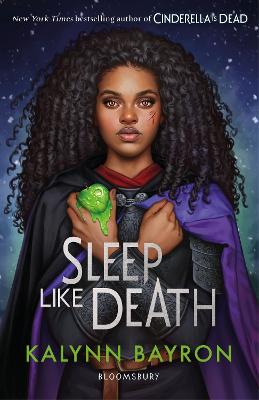 Sleep Like Death: From the author of TikTok sensation Cinderella is Dead
11+ Fairy Tales & Folk Tales 20240625
Sleep Like Death: From the author of TikTok sensation Cinderella is Dead
11+ Fairy Tales & Folk Tales 20240625
-
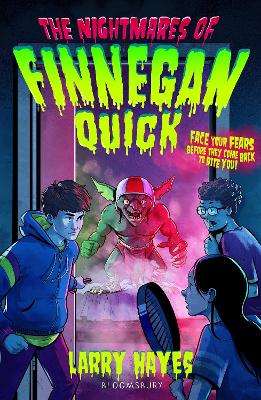 The Nightmares of Finnegan Quick
11+ Horror 20250102
The Nightmares of Finnegan Quick
11+ Horror 20250102
-
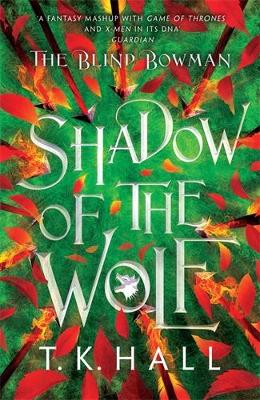 The Blind Bowman 1: Shadow of the Wolf
11+ Myths & Legends 20240202
The Blind Bowman 1: Shadow of the Wolf
11+ Myths & Legends 20240202
-
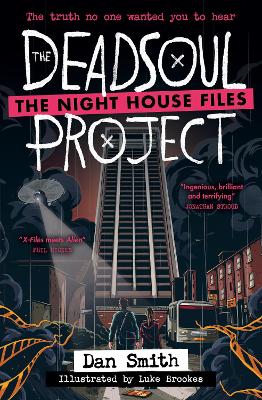 The Night House Files (1) - The Deadsoul Project
11+ Science Fiction 20250213
The Night House Files (1) - The Deadsoul Project
11+ Science Fiction 20250213
